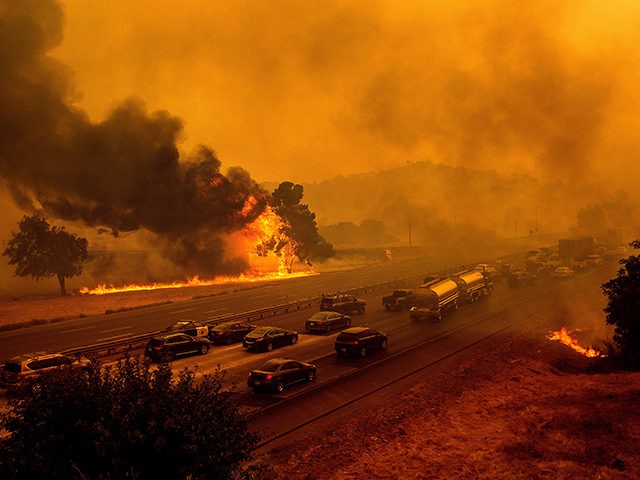California officials are finally taking a look at reducing the devastating wildfires that have plagued the state for years because of environmentalist opposition to managing forests.
As Breitbart News reported in September, environmentalists and the courts were still resisting calls for effective forest management, including efforts President Donald Trump has tried to implement, such as thinning forests to reduce fire fuel and controlled burns.
But environmental activists have taken the matter to court with judges on the United States Court of Appeals for the Ninth Circuit ruling the United States Forest Service put the plan in place “without assessing its environmental impact.”
Now, according to the San Francisco Chronicle, the state is looking not to Washington, but to Native Americans to solve the wildfire plague.
The newspaper featured a member of the Karuk tribe, Bill Tripp, who is sharing his control burn tradition with state officials:
The stakes could not be higher: More than one-tenth of California’s forestland — close to 4.2 million acres — has burned this year, more than any other on record. Millions of Californians choked on smoky skies for weeks. To Tripp and other Native Americans, the concept of “good fire” is not new. Before colonization, tribes would routinely burn the land, a culturally important practice that kept forests healthy and reduced the likelihood of larger, more intense blazes later.
For years, however, tribes and other proponents of prescribed burns have been unable to light the controlled fires on anywhere close to the scale needed to keep the state’s parched land healthy. Even as research touted the benefits of prescribed fire more than a half-century ago, the practice was long held back by misguided forest management policies, a legacy of injustice toward Native Americans and a more nebulous, deep-seated cultural resistance to flames and smoke.
The Chronicle also reported on a $1 billion deal between California and the U.S. Forest Service in August to clear out vegetation on 1 million acres of forest floors by 2025 to deprive fires of fuel.
“Figures provided to The Chronicle by the Forest Service and Cal Fire indicate that, in order to meet the 1-million-acre goal, the agencies will need to increase their fire-risk reduction work, which includes efforts to manually thin overgrown forests as well as prescribed burning, by hundreds of thousands of acres per year,” the newspaper reported. “It will take years of arduous effort to reach the new goal, but officials across the board acknowledge that part of their efforts must include intentionally igniting more blazes.”
“In the past, we’ve done smaller-type burns,” John Exline, director of ecosystem management for the U.S. Forest Service’s Pacific Southwest Region, said. “We really need to look at larger, landscape-type burning — really start looking at thousands of acres at a time, not hundreds of acres at a time.”
“People have been trying to say this is a mistake for a long time,” Tripp said of government aversion to prescribed fire. “We’re just now getting to the point where people are tired of seeing the devastation, so they’re ready to push a political discussion that starts to move us back in the direction that we really should have been going all along.”
The Chronicle also said the public and state funding have hampered effective forest management.
“Public perception is just challenging,” said Ken Pimlott, who was director of Cal Fire from 2010 to 2018 and worked on prescribed burning for the agency earlier in his career. “We didn’t have the social license to burn with the smoke. I personally was more than once threatened with lawsuits when I was putting prescribed burns together and doing community meetings.”
Cuts in the state also stopped Cal Fire’s prescribed burning efforts in years past, Pimlott said.
Follow Penny Starr on Twitter or send news tips to pstarr@breitbart.com

COMMENTS
Please let us know if you're having issues with commenting.